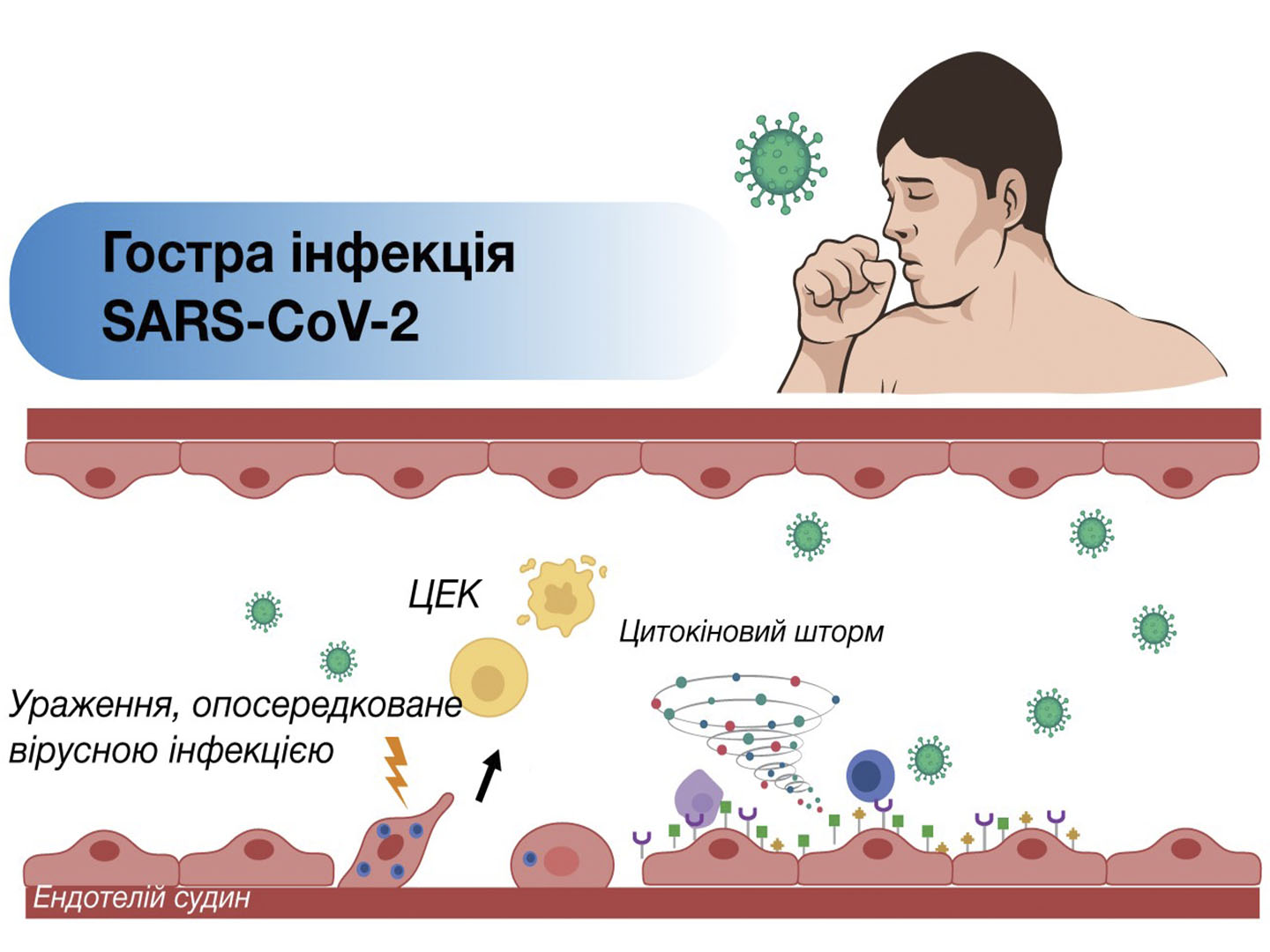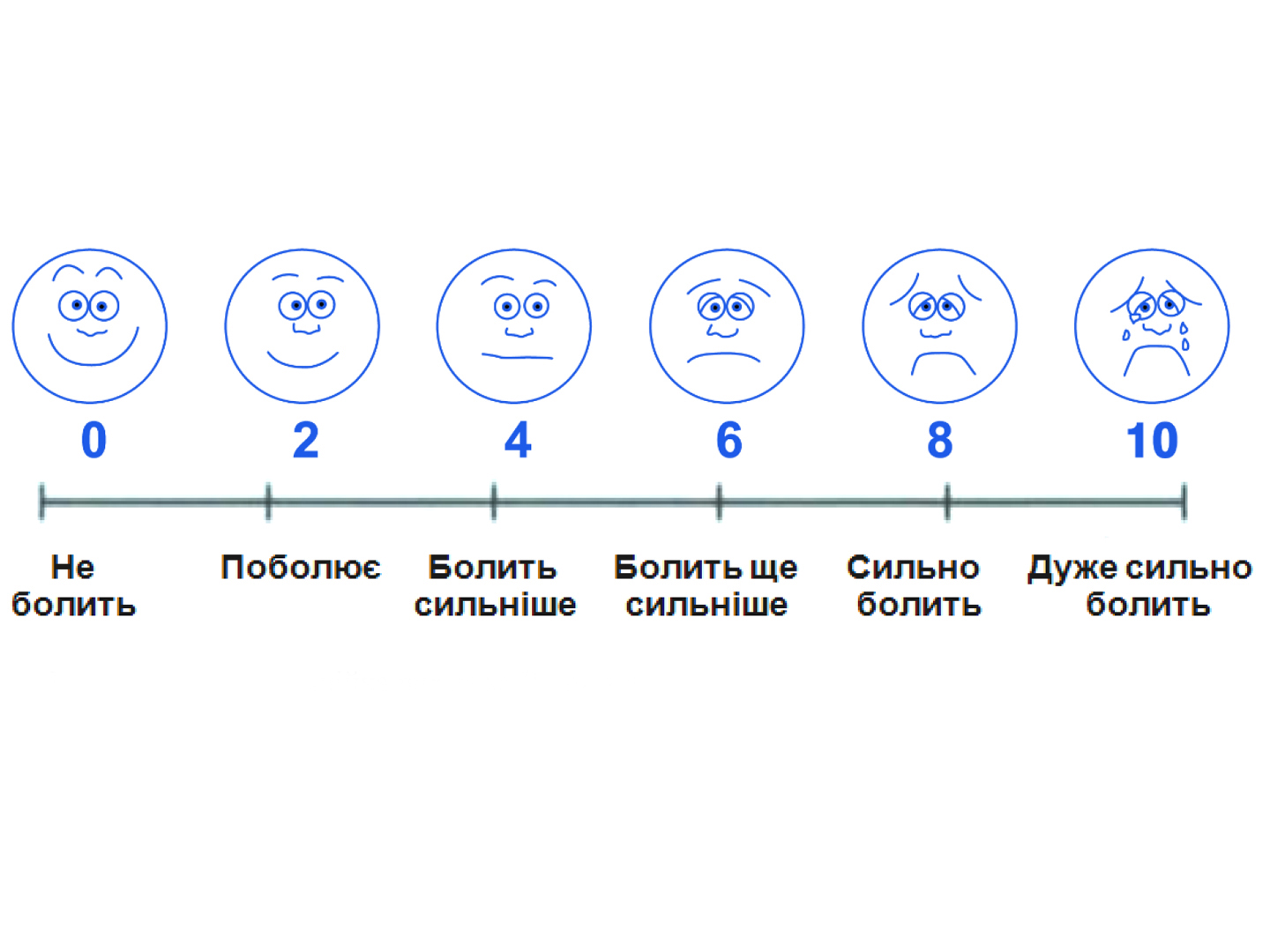Efficacy of treatment of patients with coronary heart disease using a fixed combination of L-arginine and L-carnitine in terms of evidence-based medicine. Review of international scientific sources
Abstract. Objective: to analyse the sources of scientific literature on the use of amino acids L-arginine and L-carnitine in coronary heart disease. Object and methods of research. Literary sources were searched in the main electronic databases of evidence-based medicine: BMJ Clinical Evidence, Medscape from WebMD, Centers for Disease Control and Prevention, The Cochrane Collaboration The Cochrane Library, The National Center for Biotechnology Information, Health-ua.com with a search strategy: «L-carnitine», «carnitine», «L-arginine», «Тivor-L®», «coronary heart disease». Electronic search is supplemented by manual search.
Results. The obtained scientific sources are divided into three groups: studies on the effectiveness of only L-arginine, only Lcarnitine and both. Numerous foreign and domestic studies indicate a long-term positive effect of the separate use of L-arginine and Lcarnitine in the treatment of patients with coronary heart disease. The next stage of the study was the search for scientific publications on the use of the drug, which includes both amino acids (Тivor-L®, «YuriaPharm», Ukraine) in the databases of evidence-based medicine. Data from four randomized trials of L-arginine and L-carnitine conducted over the past 10 years in Ukraine are presented.
Conclusions. The results of the analysis of the literature allow us to prescribe drugs that contain the amino acids L-arginine and L-carnitine as cardio- and endothelial protective drugs, and recommend the use their combinations for the treatment of patients with coronary heart disease. Further studies of the effects of these amino acids and the development of clinical recommendations for their rational use in cardiology are promising.
Key words: coronary heart disease, cardiovascular diseases, L-arginine, L-carnitine, Тivor-L®.
Information about the author:
Shumakov Volodymyr О. — Professor, Honored Doctor of Ukraine, Scientific Supervisor of the Department of Myocardial Infarction and Rehabilitation Treatment of the State Institution National Scientific Center «Institute of Cardiology named after acad. M.D. Strazheska» NAMS of Ukraine, Kyiv, Ukraine.
Literature:
- Kovalenko V.M., Kornatsky V.M. (2018) Current health problems and their minimization in the context of armed conflict in Ukraine: a guide. NSC «M.D. Strazhesko Institute of Cardiology», Kyiv, 215 р. (In Ukr.).
- Kovalenko V.M., Kornatsky V.M. (2011) Regional features of the level of health of the people of Ukraine. NSC «M.D. Strazhesko Institute of Cardiology», Kyiv, 165 р. (In Ukr.).
- Task Force Members; Montalescot G., Sechtem U., Achenbach S. et al. (2013) 2013 ESC guidelines on the management of stable coronary artery disease: the Task Force on the management of stable coronary artery disease of the European Society of Cardiology. Eur. Heart J., 34(38): 2949–3003. doi: 10.1093/eurheartj/eht296.
- Tashchuk V.K. (2016) Pathogenetic approach to the therapy of cardiac ischemia. News Med. Pharmac., 14 (594): 8–10. (In Rus.).
- Selyuk M.M., Kozachok M.M., Lovkin I.M., Selyuk O.V. (2017) Vibir of the optimal combination of metabolic drugs for the treatment of patients from cardiovascular pathology. Fam. Med., 2(70): 60–64. (In Ukr.).
- George J., Shmuel S.B., Roth A. et al. (2004) L-arginine attenuates lymphocyte activation and antioxidized LDL antibody levels in patients undergoing angioplasty. Atherosclerosis, 174: 323–327.
- Litvinova L., Atochin D.N., Fattakhov N. et al. (2015) Nitric oxide and mitochondria in metabolic syndrome. Front. Physiol., 6: 20.
- Almakaeva L.G., Litvinova E.V. (2011) Arginine and its application in medicine and pharmacy. Drugs of Ukraine, 1(5): https://www.researchgate.net/publication/333022625 (In Rus.).
- Cooke J.P. (2004) Asymmetrical dimethylarginine: the Uber marker? Circulation, 109(15): 1813–1818. doi:10.1161/01.CIR.0000126823.07732.D5.
- Ganz T., Wainstein J., Gilad S. et al. (2016) Serum ADMA and arginine levels predict micro- and macrovascular complications in type 2 diabetes mellitus. Diabetes Metab. Res. Rev., doi:10.1002/dmrr.2836.
- Flanagan J.L., Simmons P.A., Vehige J. et al. (2010) Review: Role of carnitine in disease.
- Ferrari R., Merli E., Cicchitelli G. et al. (2004) Therapeutic effects of L-carnitine and propionyl-Lcarnitine on cardiovascular diseases: a review. Ann. New York Acad. Sci., 1033: 79–91.
- Astashkin E.I., Glezer M.G. (2012) Role of L-carnitine in energy metabolism cardiomyocytes and treatment of diseases of cardiovascular system. Cardiol. Cardiovasc. Surg., 6(2): 58–65.
- DiNicolantonio J., Lavie C., Fares H. et al. (2013) L-carnitine in the secondary prevention of cardiovascular disease: Systematic review and meta-analysis. Mayo Foundation for Medical Education and Research Mayo Clin. Proc., p. 1–8.
- Shved M.I., Tsuglevich L.V., Heryak S.M. et al. (2019) Ways for improvement of central and peripheral hemodynamics in patients with acute coronary syndrome (myocardial infarction), who underwent balloon angioplasty and stenting of the coronary artery. Achiev. Clin. Experiment. Med., 1: 173–181. DOI 10.11603/1811-2471.2019.v0.i1.10071. (In Ukr.).
- Drexler H., Zeiher A.M., Meinzer K., Just H. (1991) Correction of endothelial dysfunction in coronary microcirculation of hypercholesterolaemic patients by L-arginine. Lancet, 338: 1546–1550.
- Ceremuzynski L., Chamiec T., Herbaczynska-Cedro K. (1997) Effect of supplemental oral L-arginine on exercise capacity in patients with stable angina pectoris. Am. J. Cardiol., 80: 331–333.
- Adams M.R., McCredie R., Jessup W. et al. (1997) Oral L-arginine improves endothelium-dependent dilatation and reduces monocyte adhesion to endothelial cells in young men with coronary artery disease. Atherosclerosis, 129: 261–269.
- Rector T.S., Bank A.J., Mullen K.A., Tschumperlin L.K. (1997) Randomized, double-blind, placebo-controlled study of supplemental oral L-arginine in patients with heart failure. Circulation, 18: 1674–1679.
- Blum A., Miller H., Blum A., Miller H. (1999) The effects of L-arginine on atherosclerosis and heart disease. Int. J. Cardiovasc. Intervent., 2: 97–100. https://pubmed.ncbi.nlm.nih.gov/12623595/.
- Yin W.H., Chen J.W., Tsai C. et al. (2005) L-arginine improves endothelial function and reduces LDL oxidation in patients with stable coronary artery disease. Clin. Nutr., 24: 988–997.
- Bednarz B., Jaxa-Chamiec T., Maciejewski P. (2005) Efficacy and safety of oral l-arginine in acute myocardial infarction. Results of the multicenter, randomized, double-blind, placebo-controlled ARAMI pilot trial. Kardiol. Pol., 62: 421–428.
- Wells B.J., Mainous 3rd A.G., Everett C.J. (2005) Association between dietary arginine and C-reactive protein. Nutrition, 21: 125–130.
- Bode-Bоger S.M. (2006) Effect of L-arginine supplementation on NO production in man. Eur. J. Clin. Pharmacol., 62 (Suppl. 13): 91–99.
- Bendall J.K., Douglas G., McNeill E. et al. (2014) Tetrahydrobiopterin in cardiovascular health and disease. Antioxid. Redox. Signal., 20(18): 3040–3077. doi:10.1089/ars.2013.5566.
- Bai Y., Sun L., Yang T. et al. (2009) Increase in fasting vascular endothelial function after short-term oral l-arginine is effective when baseline fow-mediated dilation is low: a meta-analysis of randomized controlled trials. Am. J. Clin. Nut., 89(1): 77–84. doi:10.3945/ajcn.2008.26544.
- Dong J.Y., Qin L.Q., Zhang Z. et al. (2011) Effect of oral l-arginine supplementation on blood pressure: a meta-analysis of randomized, double-blind, placebo-controlled trials. Am. Heart J., 162(6): 959–965. doi:10.1016/j.ahj.2011.09.012.
- Drover J.W., Dhaliwal R., Weitzel L. et al. (2011) Perioperative use of argininesupplemented diets: a systematic review of the evidence. J. Am. Coll. Surg., 212(3): 385–399. doi:10.1016/j.jamcollsurg.2010.10.016.
- Monti L.D., Casiraghi M.C., Setola E. et al. (2013) l-Arginine enriched biscuits improve endothelial function and glucose metabolism: a pilot study in healthy subjects and a cross-over study in subjects with impaired glucose tolerance and metabolic syndrome. Metab. Clin. Exp. 62(2): 255–264. doi:10.1016/j.metabol.2012.08.004.
- Monti L.D., Setola E., Lucotti P.C. et al. (2012) Effect of a long-term oral l-arginine supplementation on glucose metabolism: a randomized, double-blind, placebo-controlled trial. Diabetes Obes. Metab., 14(10): 893–900. doi:10.1111/j.1463-1326.2012.01615.x.
- Bahadoran Z., Mirmiran P., Tahmasebinejad Zh. et al. (2016) Dietary L-arginine intake and the incidence of coronary heart disease: Tehran lipid and glucose study. Nutr. Metabol., 13: 23. DOI 10.1186/s12986-016-0084-z.
- Gambardella J., Khondkar W., Morelli M.B. et al. (2020) Arginine and Endothelial Function. Biomedicines, 8: 277. doi:10.3390/biomedicines8080277.
- Sozykin A.V. Noeva E.A., Balakhonova T.V. et al. (2000) Effect of L-arginine on platelet aggregation, endothelial function, and exercise tolerance in patients with stable exertional angina. Ther. Arch., 8: 24–27. (In Rus.).
- Zharinova V.Y., Butynets Zh.S., Pavlenko L.A.(2014) The efficacy of L-arginine in the treatment of chronic heart failure in elderly patients with ischemic heart pain. Fam. Med., 5(55): 34–38.
- Margaritis M., Channon K.M., Antoniades Ch. (2014) Statins as Regulators of Redox State in the Vascular Endothelium: Beyond Lipid Lowering. Antioxidants & Redox Signaling, 20(8): 1198–1214.
- Colonna P., Iliceto S. (2000) Myocardial infarction and left ventricular remodeling: results of the CEDIM trial. Carnitine Ecocardiografia Digitalizzata Infarto Miocardico. Am. Heart J., 139: S124–S130.
- Xue Y.Z., Wang L.X., Liu H.Z. et al. (2007) L-carnitine as an adjunct therapy to percutaneous coronary intervention for non-ST elevation myocardial infarction. Cardiovasc. Drugs Ther., 21: 445–448.
- DiNicolantonio J.J., Lavie C.J., Fares H. et al. (2013) L-carnitine in the secondary prevention of cardiovascular disease: systematic review and meta-analysis. Mayo Clinic Proceedings, 88(6): 544–551.
- Song X., Qu H., Yang Z. et al. (2017) Efficacy and Safety of L-Carnitine Treatment for Chronic Heart Failure: A Meta-Analysis of Randomized Controlled Trials. BioMed. Research. Int. https://doi.org/10.1155/2017/6274854.
- Vakalyuk I.P. (2016) Results of a study of the efficacy and tolerability of Tivorel® in the complex treatment of patients with acute coronary syndrome without ST-segment elevation and unstable angina pectoris. Health of Ukraine, 4: 50–52. (In Rus.).
- Fushtey I.M., Podsevakhina S.L., Chabanna O.S., Tkachenko O.V. (2019) Evaluation of the efficacy and tolerability of the combination of L-carnitine and arginine hydrochloride in patients with stable stress angina. Fam. Med., 3(83): 81–85. (In Ukr.).
- Tashchuk V.K., Polianska O.S., Ivanchuk P.R. et al. (2020) Evaluation of the cardioprotection efficiency in the treatment of patients with acute myocardial infarction and stable angina pectoris by means of digital processing of ECG (digitalization) with subsequent expert assesment. Bukovinian Medical Herald, 24(1)(93): 142–151. (In Ukr.).
- https://clinicaltrials.gov/ct2/show/NCT04637906
- https://clinicaltrials.gov/ct2/show/NCT04623619



